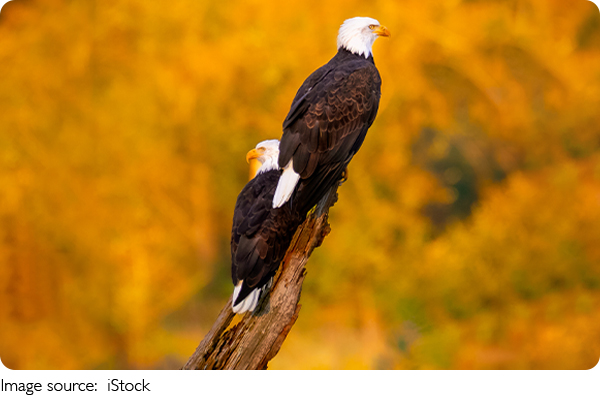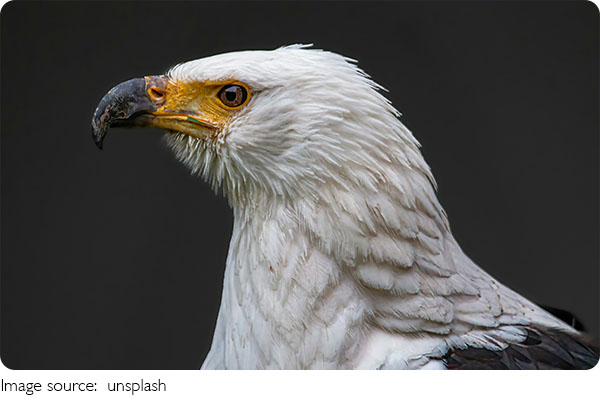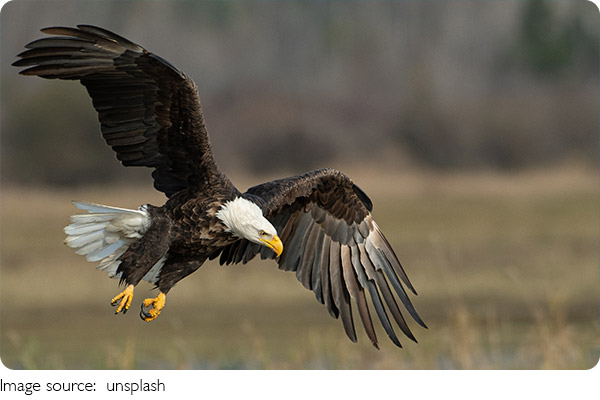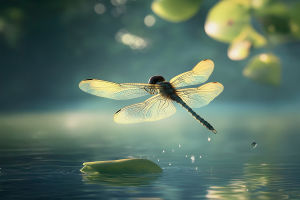Eagle Wind Balance

There's something breathtaking about seeing a bald eagle perched high on a tree or cliff, completely unfazed by the wind blowing around it. While many birds wobble or fly off, the eagle remains still, almost like a statue.
So, what's their secret? How do bald eagles manage to stay so stable in strong winds? Let's explore the amazing design behind this powerful bird.
It starts with strong, smart feet
One big reason bald eagles can stay steady is their incredible feet and talons. These birds have sharp, curved claws that tightly grip onto branches or rocks. But it's not just about being sharp—their feet are designed to lock into place. Once an eagle grips something, its leg muscles allow it to hold on without using much effort. This locking mechanism works almost like a built-in clamp, letting them stay perched even during strong gusts of wind.
Balance comes from body control
Bald eagles are excellent at using their bodies for balance. They make tiny movements with their wings, tail, and head to adjust to shifting wind. These small, nearly invisible corrections help them stay upright. It's like how we use our arms when walking on something narrow—they shift their body weight automatically to stay steady. Years of flying and perching help them master this balance from a young age.

Wings help even when not flying
Even when they're just standing still, bald eagles use their wings in smart ways. If the wind gets too strong, they might slightly open their wings—not to fly, but to reduce the pressure of the wind on their bodies. This technique helps them stay grounded instead of being pushed off balance. Their wide, strong wings also act like natural stabilizers.
They pick the right spot
Believe it or not, bald eagles are pretty smart about where they perch. They usually choose sturdy branches, rocky outcrops, or thick tree limbs that won't sway too much in the wind. By picking the most stable location available, they reduce how much they need to adjust themselves. It's like choosing the right chair in a moving bus—sit closer to the middle and you'll feel steadier.
Powerful muscles do the rest
These birds aren't just graceful—they're strong. Their legs, feet, and core muscles help them hold still against the push of the wind. When they stand, they often crouch slightly, which lowers their center of gravity and makes it harder for the wind to knock them off. It's the same reason athletes bend their knees when bracing themselves—it keeps them planted.
Built to live in the sky
Bald eagles live in areas where wind is common—near coasts, lakes, and mountains. Over time, their bodies have adapted to handle tough weather. Their feathers lie flat and tight, reducing wind resistance. Their tails fan out to help with stability. And their eyes stay focused, watching everything even in rough conditions. Every part of them is made for life in the air—and on high perches.

What we can learn from them?
Watching a bald eagle stand firm in the wind is a great reminder of strength, balance, and calm in the middle of chaos. While we may not have talons or wings, we can learn from their quiet focus and steady presence. Sometimes, the best way to face challenges is to stay grounded, adjust a little, and trust our inner strength.
Have you seen one in action?
Have you ever watched an eagle standing strong on a windy day? If you have, you know how inspiring it is. If not, next time you're near a lake or forest, look up—you might spot one holding its ground like a true master of the wind.
Tell us your eagle story or what you admire most about these amazing birds. Nature has so much to teach us—if we're willing to look and learn!


